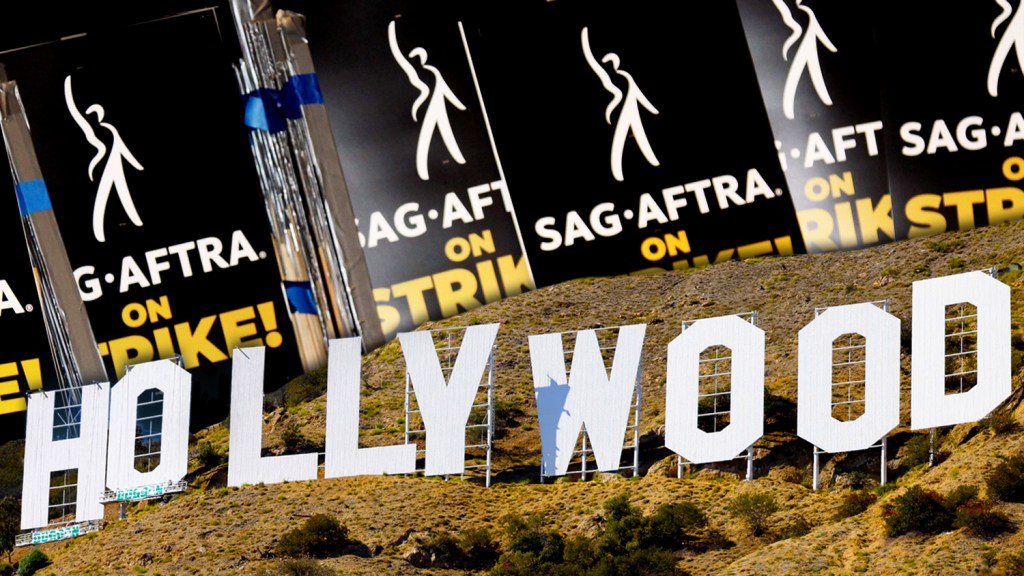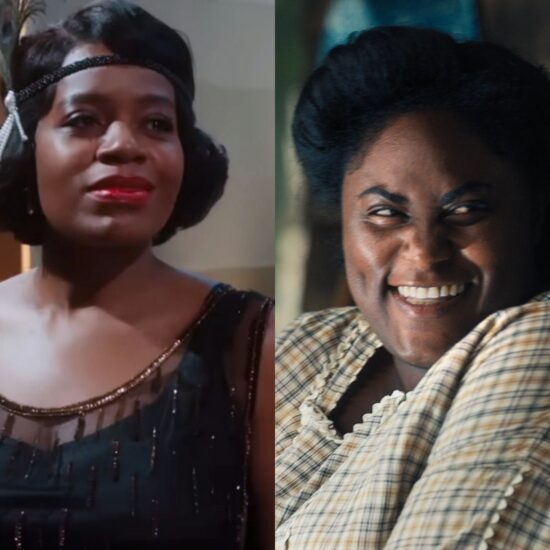
Now that a tentative agreement has been reached to end the Writers Guild’s strike, SAG-AFTRA, of course, is next, with IATSE waiting in the wings.
When the Directors Guild reached its own deal for a new contract without a strike back on June 3, the WGA, which had already been on strike since May 2, insisted that it wouldn’t accept the industry’s longtime practice of “pattern bargaining,” in which the next union to come to the bargaining table is expected to follow suit and make a similar deal.
With the WGA, after 146 days of picketing, achieving somewhat – some might say significantly – better terms than the DGA did, SAG-AFTRA might see the WGA deal, if not as a “pattern” to follow, then at least as a template to build upon. This could be the case for many, but certainly not all, of SAG-AFTRA’s demands for better wages, a whole new way of calculating streaming residuals and safeguards against potential abuses arising from the use of artificial intelligence.
RELATED: From ‘Suits’ To Nuts, Streaming Residuals Explained
SAG-AFTRA up next
That could prove to be a new re-starting point once SAG-AFTRA’s negotiations resume. Its leaders have said since the July 14 start of the actors strike that they are “ready, willing and able” to return to the bargaining table at any time, but just as the WGA had core issues that the DGA didn’t share, such as minimum staffing and duration of employment in TV writers rooms, SAG-AFTRA has performer-centric needs than neither the DGA nor the WGA contract addressed.
For instance, self-taping of auditions has become a huge issue for actors ever since the practice became almost universal during the Covid pandemic.
“Self-taped auditions are unregulated and out of control,” SAG-AFTRA said back in June before negotiations began with the AMPTP. “Too many pages, too little time and unreasonable requirements have made self-taping auditions a massive, daily, uncompensated burden on the lives of performers.”
The guild says that “reasonable rules and limitations, and access to other casting formats, are sorely needed to ensure fair access to work opportunities and protect performers against exploitation,” and that “many other important issues, including those specific to particular careers and categories, will be on the table as well.”
After SAG-AFTRA went on strike, the AMPTP maintained that it already had made a fair offer on self-taping of auditions, saying that it had offered a “limitation of self-tape requests, including page, time and tech requirements.”
And in bargaining before the strike began, the two sides had tentatively agreed to numerous new self-taping rules, including limitations on technical requirements such as recording quality, cameras, lights, microphones, backgrounds, editing software and uploading services. They’d also tentatively agreed to limitations on slate requirements, including allowing vertical/portrait full-body shots.
They also tentatively agreed that performers would not be requested to audition in the nude or be required to do a stunt in an audition, that all the relevant protections for self-taped auditions shall apply to virtual auditions and that dancers shall not be asked to choreograph or improvise during auditions and that it must be a solo dance. Additionally, they tentatively agreed to the secure storage of self-taped auditions.
And while SAG-AFTRA still wants further self-taping protections, the deal points on which the two sides already have tentatively agreed could provide another re-starting point for a deal, unless the companies take a hardline position and insist that those tentative agreements evaporated once the strike began — which would make reaching an overall deal even tougher.
The WGA’s deal on curbing potential abuses of artificial intelligence, meanwhile, might prove to be a pattern that SAG-AFTRA can adapt to address the specific threats it poses to performers. But SAG-AFTRA said pre-strike that the AMPTP “failed to address many vital concerns, leaving principal performers and background actors vulnerable to having most of their work replaced by digital replicas.”
Money – wages and residuals – also could prove to be tough sledding, as SAG-AFTRA still is demanding an 11% pay raise in the first year of a new contract. But much of that increase, even if they make a deal, already has been wiped out by months without work.
IATSE deal up in 2024
Once the actors strike ends – and it will end eventually – the AMPTP will have IATSE to deal with next year. IATSE members, who have stood steadfast with striking actors and writers, have suffered as much as the strikers and no doubt will seek gains to make up for lost wages and massive hits in terms of employer contributions to their pension and health plans during the strikes. And two years ago, IATSE members came within a few votes of rejecting their last contract and launching the first industrywide strike in that union’s history.
RELATED: IATSE Unveils “Core Principles” For Application Of AI In Entertainment Industry
Whether they’ll be unwilling to strike after all the hardship they’ve endured during the pandemic and the strikes by actors and writers or be more militant and ready to strike than ever, remains to be seen.
In the meantime, WGA members still have to ratify their new deal. After tonight’s news, the Ellen Stutzman-led WGA negotiating committee will next vote on “whether to recommend the agreement and send it on to the WGAW Board and WGAE Council for approval” in votes tentatively scheduled for Tuesday, the guild said in its message to members announcing the agreement.
During the WGA’s last strike in 2007-08, a tentative agreement was reached on the 96th day, but it wasn’t over until the 100th.
The first shows to shut down when the WGA strike began – late-night comedy shows and daytime talk shows – will be the first to return to air because SAG-AFTRA’s ongoing strike doesn’t include them. But films and scripted TV shows that didn’t sign Interim Agreements with SAG-AFTRA will remain dark until its strike is settled.













